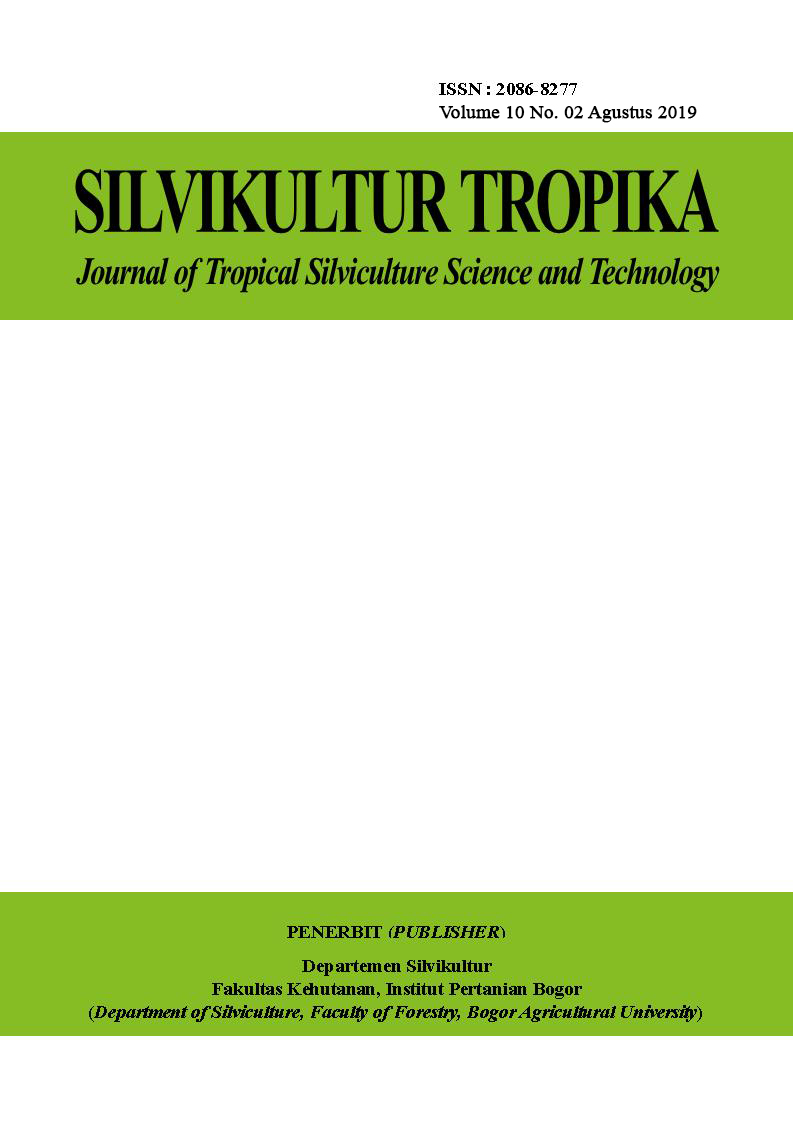Karakteristik Sifat Kimia Tanah dan Status Kesuburan Tanah pada Agroforestri Tanaman Sayuran Berbasis Eucalyptus Sp.
Abstract
Ministry of Environment and Forestry launched a flood prevention program in Garut regency with 3 rehabilitation programs namely conventional tree planting (Conventional Crops), Air Nurseries, and agroforestry forests. Choice of type is the key to success of agroforestry. The most widely planted species in the Cimanuk watershed are cultivars combined with vegetable crops. This study aims to analyze the soil chemical fertility status on eucalyptus-based vegetable agroforestry patterns in some age classes and to analyze changes in soil fertility status after harvest. The soil fertility status is chemically classified in all plots either monoculture or under eucalyptus age 2, 4, and 6 years.. Agroforestry planting patterns can improve the soil fertility status chemically into high categories. Prior to cultivation the mean value of CEC was 24.72 me / 100gr (moderate), Saturation Base 64.19% (high), P2O5 35.57 me / 100gr (very high), K2O 213.48 me / 100gr (very high), and C-org 3.54 % (high). After harvest the average value of CEC is 25.36 me/100g (high), Saturation Base 66.04 % (high), P2O5 77.05 me/100g (very high), K2O 652.83 me/100g (very high), and C-org 3.84 % (high).
Key words: agroforestry, Cimanuk watershed, vegetable










